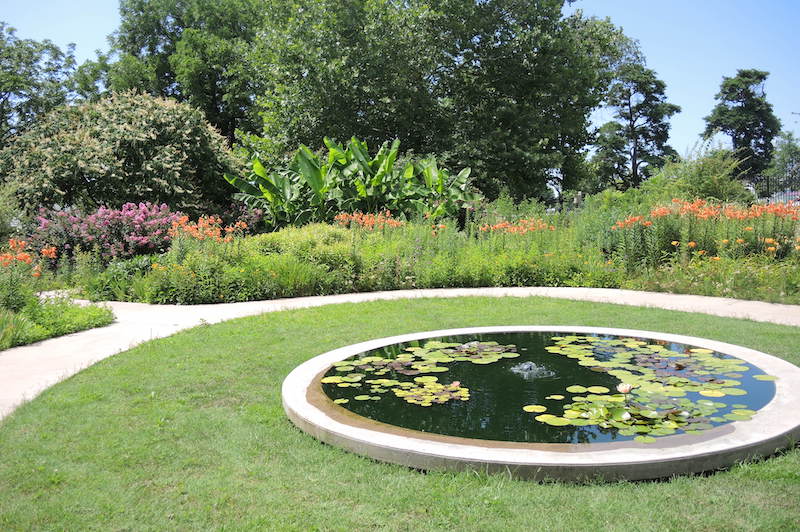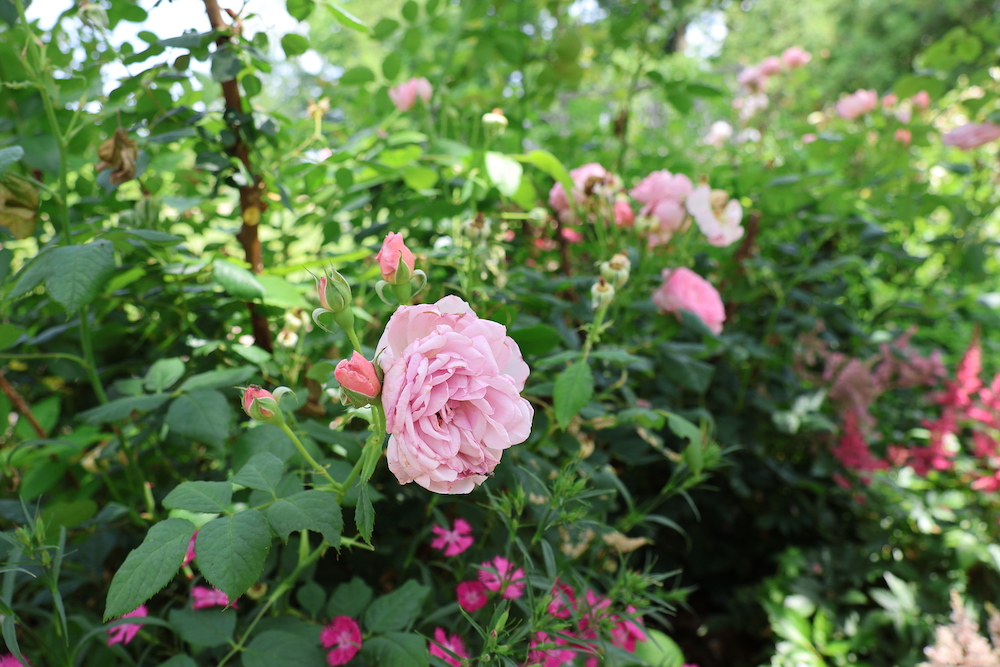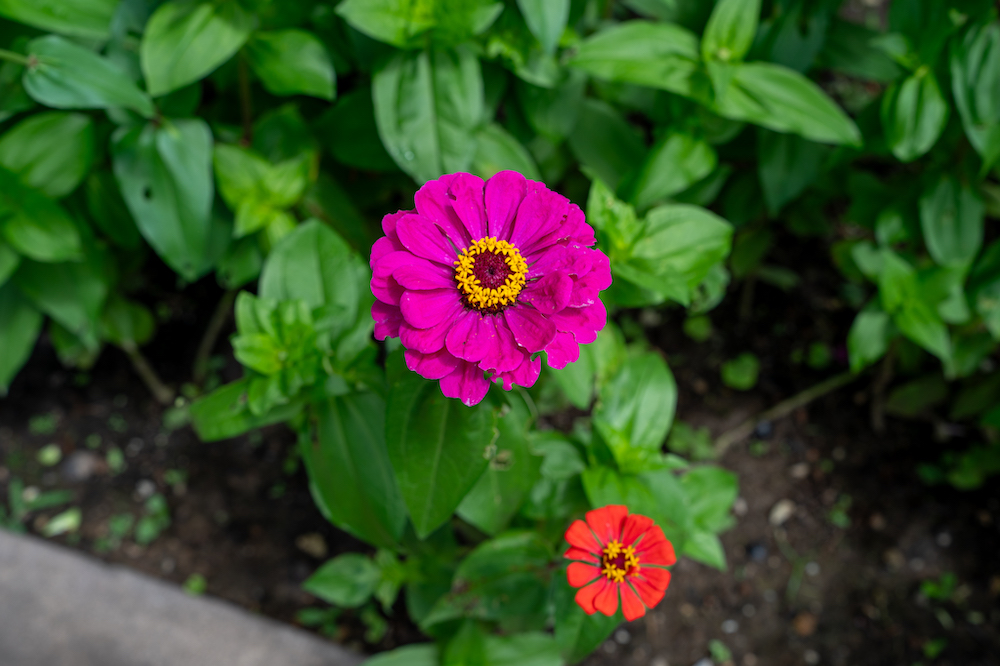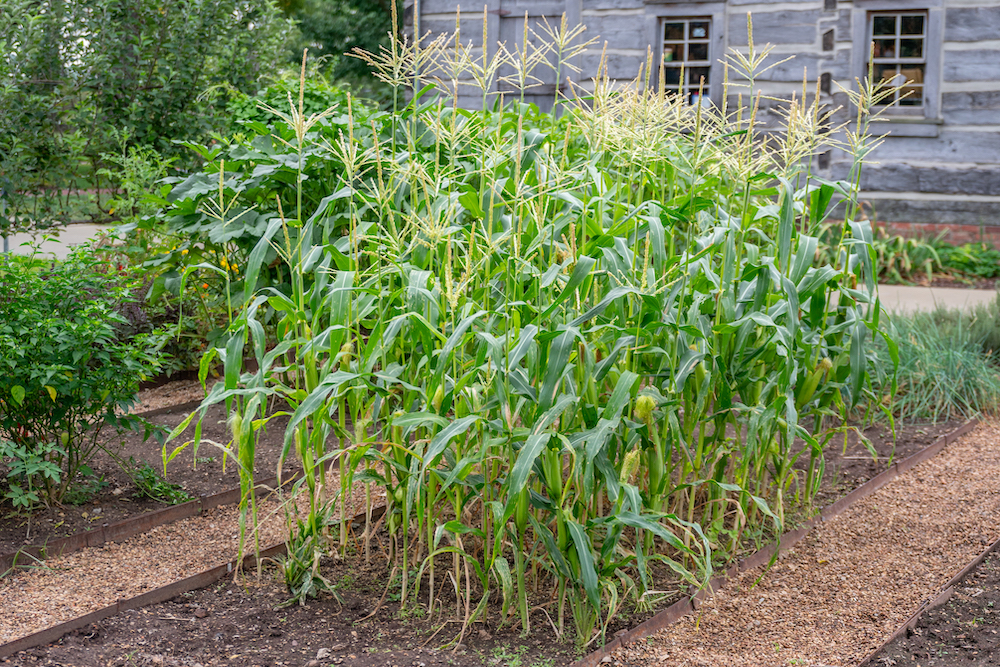Explore The Garden
at The Peel Museum & Botanical Garden

Perennial Garden
As you enter the garden, the circular design becomes evident, highlighted by the formal pond and winding path. The pond not only offers a space for aquatic gardening but also serves as a habitat for aquatic life, while the soothing sound of water creates a peaceful retreat, muffling the noise from the road.

Rose Garden

Herb Garden
This exciting space includes four geometric garden beds, with a sundial at its center, designed to keep accurate time for our latitude of 36 degrees N.

Cutting Garden

Vegetable Garden
The horticulture team follows organic and environmentally responsible practices, including crop rotation, cover crops, composting, drip irrigation, beneficial insects, and diverse plantings of herbs and edible flowers. All vegetables harvested from the garden are donated to local food banks, supporting the community while preserving heirloom varieties.

Children’s Memorial Garden

